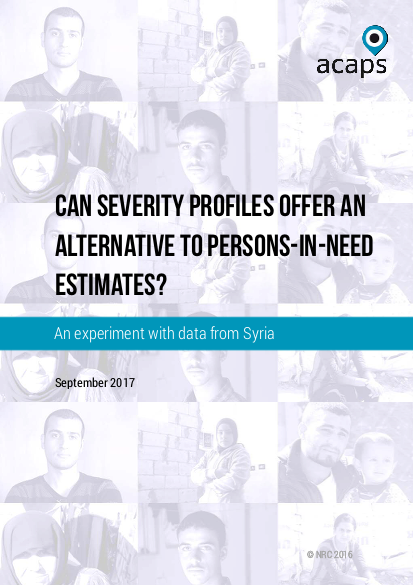
Estimates of persons-in-need are a key result expected of humanitarian needs assessments. However, they are challenging. Some are not informative, because of the methods chosen, missing and unreliable data or the way the humanitarian partners collaborate. In the absence of satisfactory PiN figures, substitutes are needed to inform prioritization and response planning. Other types of information may still be available in adequate scope, coverage and reliability. If the analyst manages to build a process model and a measurement model that delivers some measure of severity and of the associated populations, the needs assessment succeeds even in the absence of ordinary PiN estimates.
This note proposes a method in situations where sectors, clusters and perhaps other actors contribute two types of information: sectoral severity rankings (which are ordinal variables) as well as demographic and situational indicators (which may come as categorical or as continuous variables). The method combines the severity rankings and the indicators in a simultaneous model. The model is estimated through a statistical procedure known as Latent Profile Analysis.